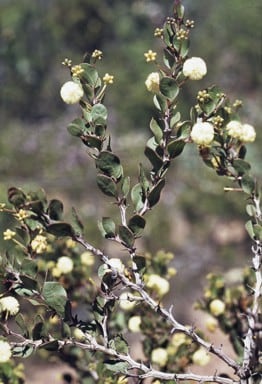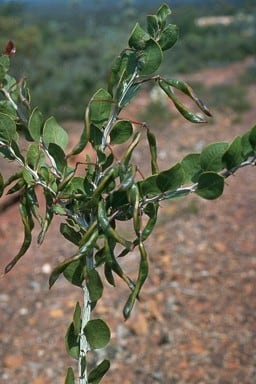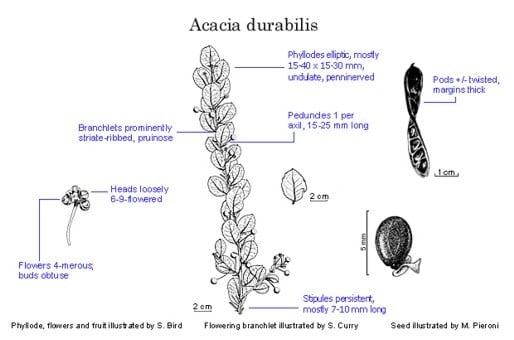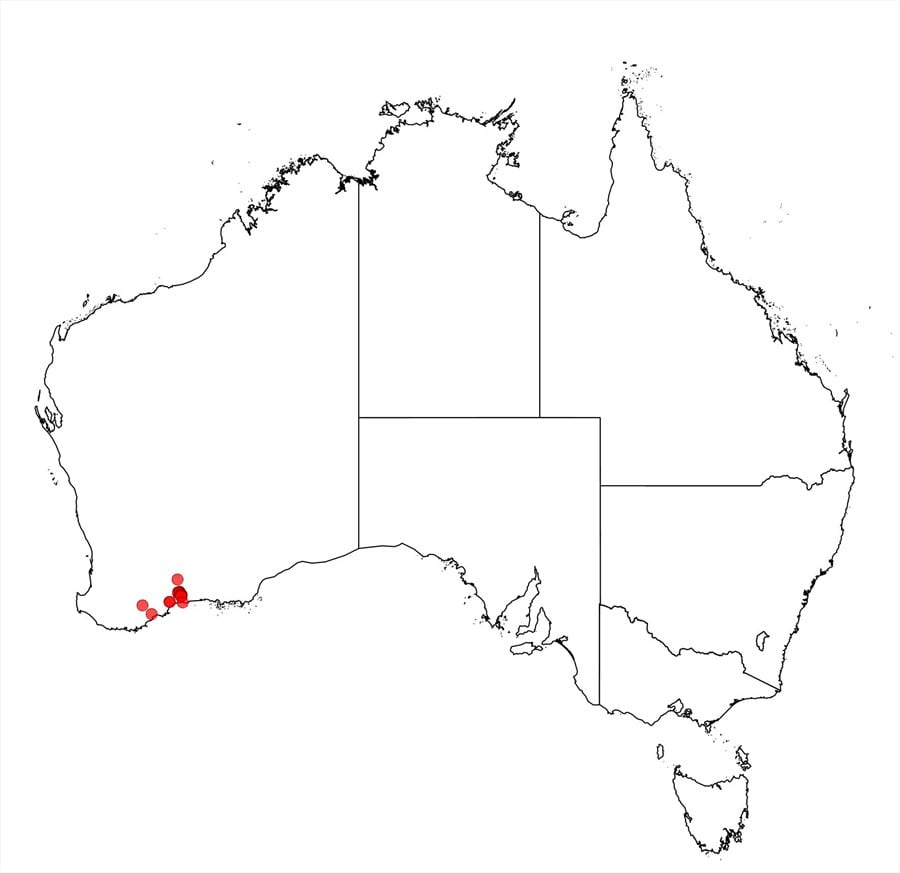Acacia durabilis Maslin
WATTLE
Acacias of Australia
Family
Fabaceae
Distribution
Most common in the Ravensthorpe Ra. from Mt Desmond to Kundip, with a collection 7 km NE of Ravensthorpe (c. 12 km NW of Mt Desmond), and also occurs at the Jerdacuttup R. (about 10 km E of the Ravensthorpe Ra.), south-western W.A. A specimen from the Pallinup R., c. 150 km due SW of Ravensthorpe Ra. (Superintendent Daniels s.n., PERTH00150649) is distributionally anomalous and should be confirmed as coming from this locality.
Description
Spreading open shrub 0.7–2 m high, glabrous. Branchlets terete, prominently striate-ribbed, pruinose. Stipules persistent, (5–) 7–10 (–12) mm long, indurate, coarsely pungent. Phyllodes elliptic, normally 1.5–4 cm long, (1–) 1.5–3 cm wide, undulate, obtuse-mucronate, with coarsely pungent and inflexed mucro, coriaceous, green, with prominent midrib and marginal nerves, penninerved, commonly with a minor nerve subparallel to midrib from near base; gland prominent, 2–4 mm above pulvinus. Inflorescences simple, normally 1 per axil; peduncles (10–) 15–25 (–27) mm long, often red when young; heads globular, loosely 6–9-flowered, cream to pale yellow; buds large, obtuse. Flowers 4-merous; sepals 1/4–1/3 length of corolla, united into a truncate to sinuously lobed calyx. Pods narrowly oblong, wholly or partially spirally twisted, to 6 cm long, 6–8 mm wide, crustaceous to subwoody; margins thick. Seeds longitudinal, elliptic, c. 4 mm long, glossy, brown; funicle dilated at attachment to pod; aril small.
Habitat
Grows on ridges and hillsides, occasionally near creeks, in rocky or lateritic clay or sandy clay, in open mallee scrub or low woodland.
Specimens
W.A.: 11 km ESE of Ravensthorpe, 0.5 km E of Mt Desmond, M.D.Crisp 4954 (CANB, PERTH); Jerdacuttup R., C.A.Gardner 13755 (PERTH); Kundip, K.Newbey 2494 (K, PERTH); Ravensthorpe Ra., 7 km NE of Ravensthorpe, K.R.Newbey 11799 (PERTH).
Notes
A member of the ‘A. myrtifolia group’, often sympatric with A. heterochroa subsp. heterochroa which it superficially resembles; its dilated funicle is otherwise known only in A. nervosa. All three species are members of the same group.
FOA Reference
Data derived from Flora of Australia Volumes 11A (2001), 11B (2001) and 12 (1998), products of ABRS, ©Commonwealth of Australia
Author
Minor edits by J.Rogers
B.R.Maslin
This identification key and fact sheets are available as a mobile application:
URL: https://apps.lucidcentral.org/wattle/
© Copyright 2018. All rights reserved.









